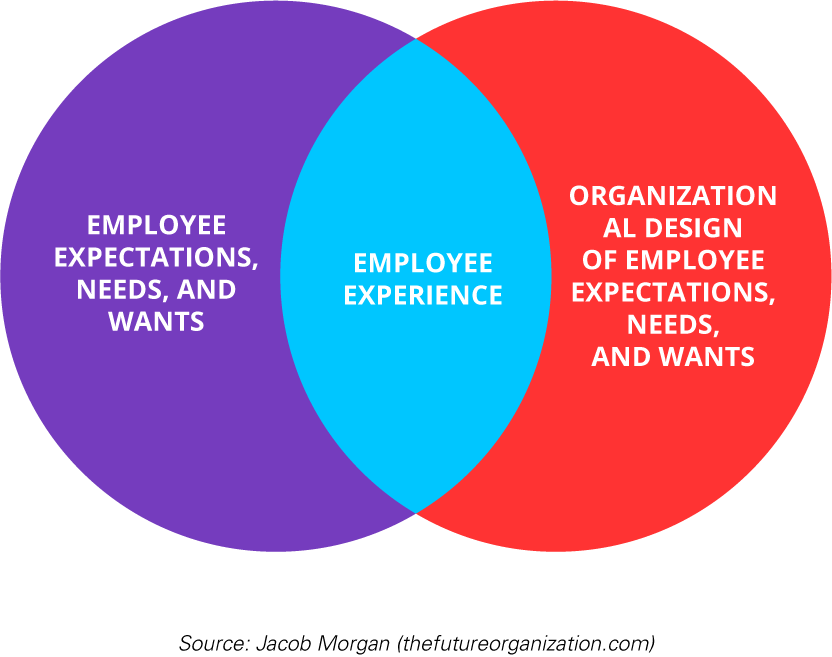From Customer Experience to Employee Experience
How to enable the employee potential and become CX leader?
It’s been a long time since the Cluetrain Manifesto had been published. It was the 1999, long time ago. But it’s still essential: particularly, one of the clearest merits of the works written by Rick Levine, Christopher Locke, Doc Searls and David Weinberger, to explain the shocking changes happened in the late 1990s in communication and in the organizations, is their ability to connect the dots.
Regarding the Web impact on the interactions between and organizations and its external (customers and prospects) and internal audience (employees, collaborators and business partners), such a permeable approach about the organisational borders is still today an urgent topic for experts and analysts. There are a lot of analysis that put as an urgent action the demolition of the silos between the company functions, particularly the ones that work with the external targets (HR) and the ones that address to the market (Marketing). Today as never before, outside and inside are strictly connected. Breaking down these silos allows the development of the digital mindset, raising it to a company culture. The good experiences lived by external audience are born within the company. Therefore, the customer experiences must be consistent with the ones lived by employees, the internal customers. What does it imply?
What are the costs and the benefits of the alignment between employee experience and customer experience?
An illuminating answer to this question is given by the methods of some platforms, also in terms of organization. AirBnB ensures happy experiences to every employee thanks to the following steps:
- The first one was the appointment of the HR Manager as Chief Employee Experience Officer. A role that breaks down the traditional distinctions between Human Resources, Marketing, Communication, Corporate Responsibility.
- The second one was the development of a remarkable experiential workplace.
- To implement the status of an immersive and experiential workplace expressed by the #BelongAnywhere hashtag, in addition to smartworking, the AirBnB office was one of the first place to mix house and work moods. It has implemented a kitchen, a library, a nerd cave, an area for meditation, a gym for yoga, a space where people can write on the walls, a great amphitheatre with wonderful plants in a 3 floors hall.
- The experience is enriched by volunteer hours in favour of the local communities; therefore, training activities has been co-designed in crowdsourcing to develop the skills and expertise and work well.
According to AirBnB, the best way to supply and make the quality of the customer experience sustainable is to create an enviable employee experience.
Why is the employee experience as important as the customer experience?
The role of the employees, partners and all the people living in the company gets an essential importance as regards the interactions and the experiences driven by the organization, also when it acts as a brand. The annual study of Edelman Trust Barometer (www.edelman.com/trust-barometer) measures the people trust level. The last editions showed that the employees’ voice is one of the most reliable and efficient corporate touch points: an important marker of the role of the people not only as good workers, but also as successful and passionate advocates for the interactions with the customers. This is because people themselves are both storytellers and storydoers, by living the company 24/7.
Human resources become involved and passionate storytellers. It’s a virtuous and complex challenge in progress – according to the Gallup research, whose surprising and alarming result shows that the 87% of the people are not engaged in their workplace. Engagement has a huge strategic value for the competitiveness.
To design remarkable and relevant customer experiences, companies need to start from their people: the employee experience anticipates and activates the customer experience. Let’s think about it: how many activities regarding the employees have implemented the idea of making their workplace experience as outstanding and engaging as the customer one?

How can a company become a fluid ecosystem and constantly stimulate its employees?
Transforming the workplace isn’t enough. If the companies live in an ecosystem, it must be constantly supplied with new hubs and connections. On return from travelling in China, in his article 12 Patterns of Platform Design to kickstart Innovation Strategies (https://stories.platformdesigntoolkit.com/12-patterns-of-platform-design-to-kickstart-innovation-strategies-500c6dec9c3b) Simone Cicero points out that: “there’s a common trait in the companies I’ve met that are taking a platform-ecosystem transformation. Transformation is based on the knowledge that units, teams and employees are called to become entrepreneurs. According to this reality, the ultimate success for the employee comes from his self-expression, responsibility and independence”. The Haier Group is a Chinese corporation leader in the production of household appliances, its partners are always stimulated to use the opportunities and create micro farms and startups. Every man is the artisan of his own fortune, but also of the Group one, which organically develops its platform brand.
The company doesn’t provide work to people, but a continuous series of opportunities. The corporate approach becomes fluid, always in progress: “the future gets ready to be connected to the necessity to organize, rather than to the organization”. A challenge to the constant improvement, which has been read by the employee Fu Haining: “at first it can be painful, because the culture of the continuous challenge can make you feel like what you’ve done or achieved isn’t appreciated. But then you start to figure out that this is what you need to keep up in an extremely competitive business” (www.strategy-business.com/article/00323?gko=f6212). The creation of an employee ecosystem, where they became entrepreneurs and integral part of the supply chain: a topic in which in Italy we are pioneers, thanks to case histories as Loccioni. The marchigiana mechatronic firm, called “technologic tailoring” by its President Enrico Loccioni, implemented this approach many years ago, becoming an excellent case history imitated and followed throughout the world.
What is the opposite risk of this kind of approach, if designed and implemented with an unproper mindset? Reduce strain to a rhetoric and superficial operation.

 18 February 2020
18 February 2020

